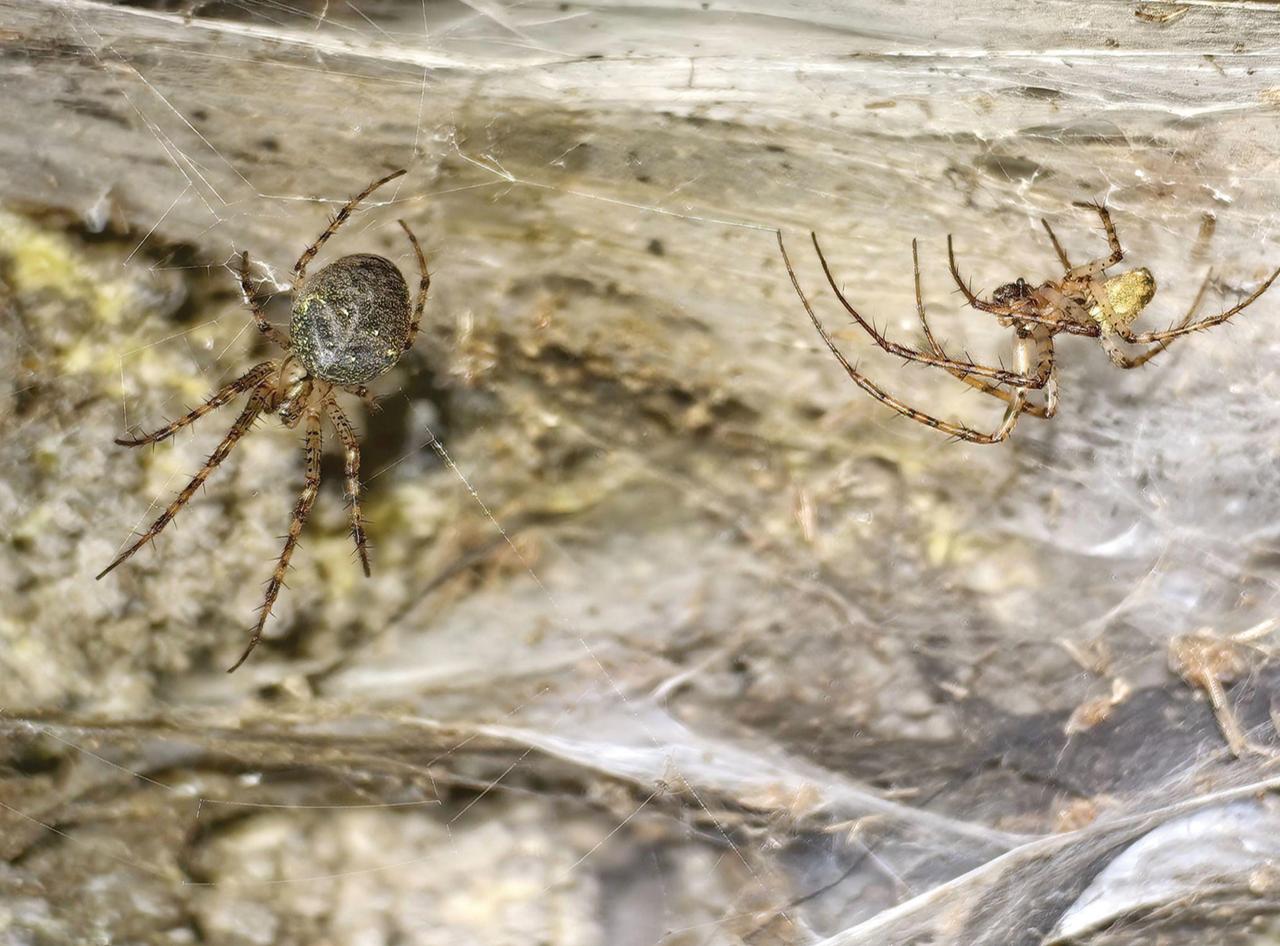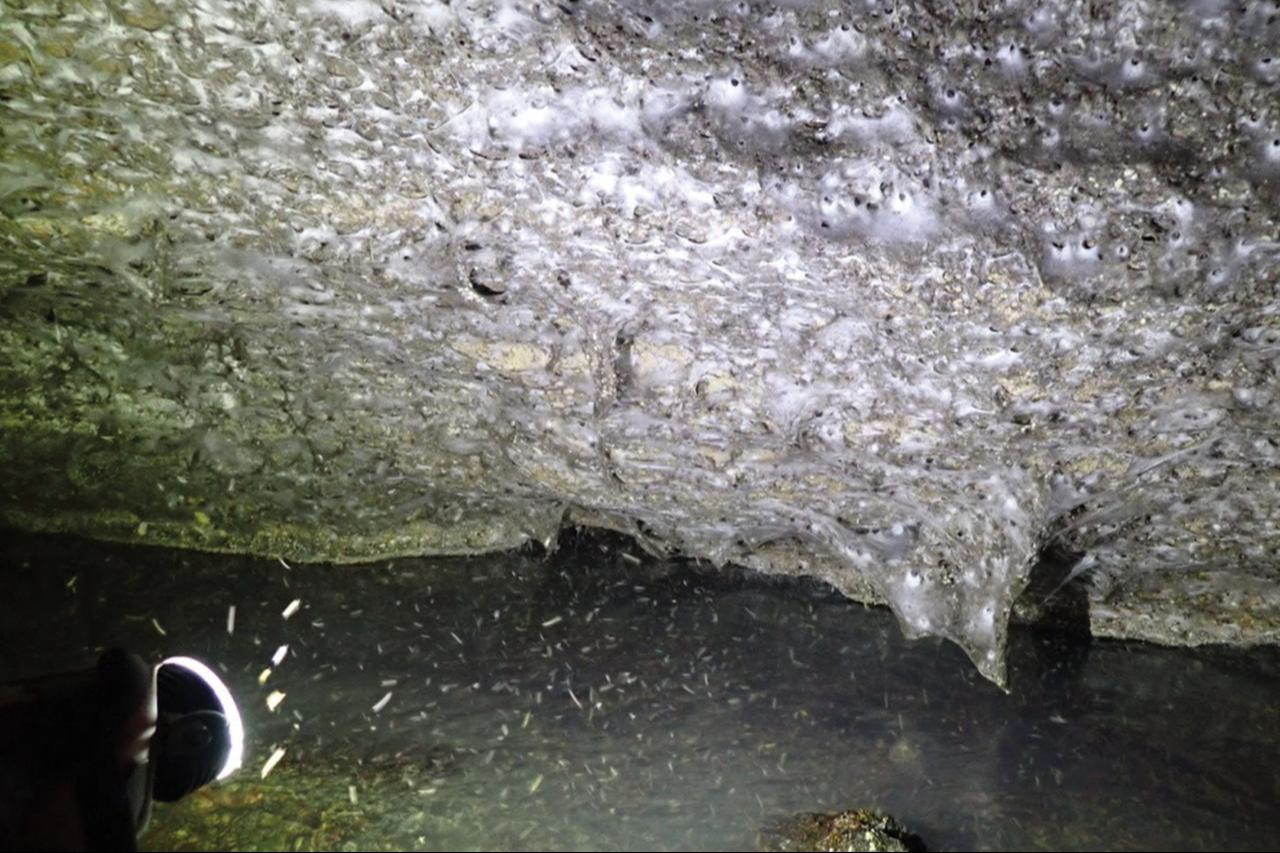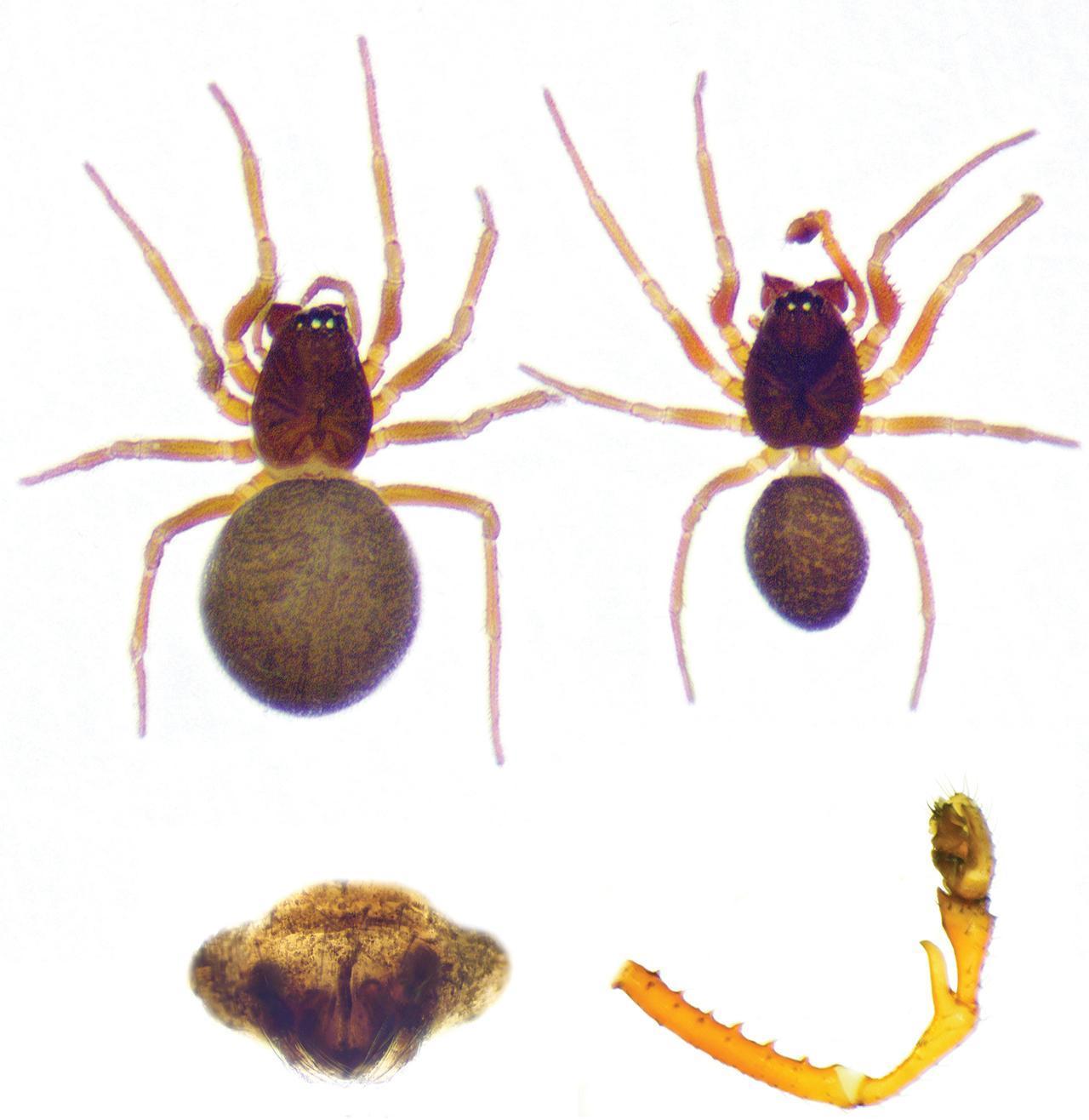
Researchers report what may be the world’s largest spider web—a vast, multilayered sheet spanning about 106 square meters along a cave wall where Greece meets Albania. The structure shelters an estimated 69,000 Tegenaria domestica (the domestic house spider) and 42,000 Prinerigone vagans, marking the first documented case of a true colonial web for either species.
Both spiders typically live solitary lives, which makes this dense cohabitation striking on its own.

The site—known as Sulfur Cave—sits in perpetual darkness and is laced with hydrogen sulfide (H₂S), a toxic gas. In such “chemoautotrophic” settings, life does not begin with sunlight. Instead, sulfur-oxidizing microbes produce organic matter that fuels the entire food chain. Stable isotope analysis—a method that traces who eats what by reading chemical signatures in tissues—showed that these spiders feed on cave-born resources rather than insects drifting in from outside.
Non-biting midges (chironomids) hatch from the cave stream, swarm the wall in extraordinary numbers, and get caught en masse, creating a constant food supply that can support a colony on this scale. The authors describe this as a unique case of “facultative coloniality” driven by resource abundance in a sulfur-powered ecosystem.

To size the colony, the team photographed random quadrats of the web, counted individual funnel retreats, and extrapolated to the full wall area. That approach yielded the ~69,000 and ~42,000 population estimates for the two species and a total webbed surface of roughly 106 square meters.
While some abandoned retreats can slightly inflate numbers, the authors note that the food windfall from the midge swarms readily explains the colony’s persistence at scale.

DNA barcoding and morphology confirmed the two species and revealed that the cave populations are genetically distinct from neighbors living just outside. In other words, despite being common surface spiders worldwide, the sulfur cave residents appear to be adapting in isolation to their extreme habitat.
Preliminary microbiome work also found that the cave-dwelling T. domestica carry a simpler set of gut-associated bacteria than a surface counterpart, hinting at further underground specialization.

The colony—built by a house spider that rarely shares space—adds an unexpected chapter to subterranean biology. It shows how abundant, steady resources in a hostile environment can flip the social script, drawing typically solitary predators into a durable, cooperative framework of interconnected silk.
The authors say the finding offers new insight into how surface species integrate into sulfidic cave food webs—and how isolation underground can start to reshape them.